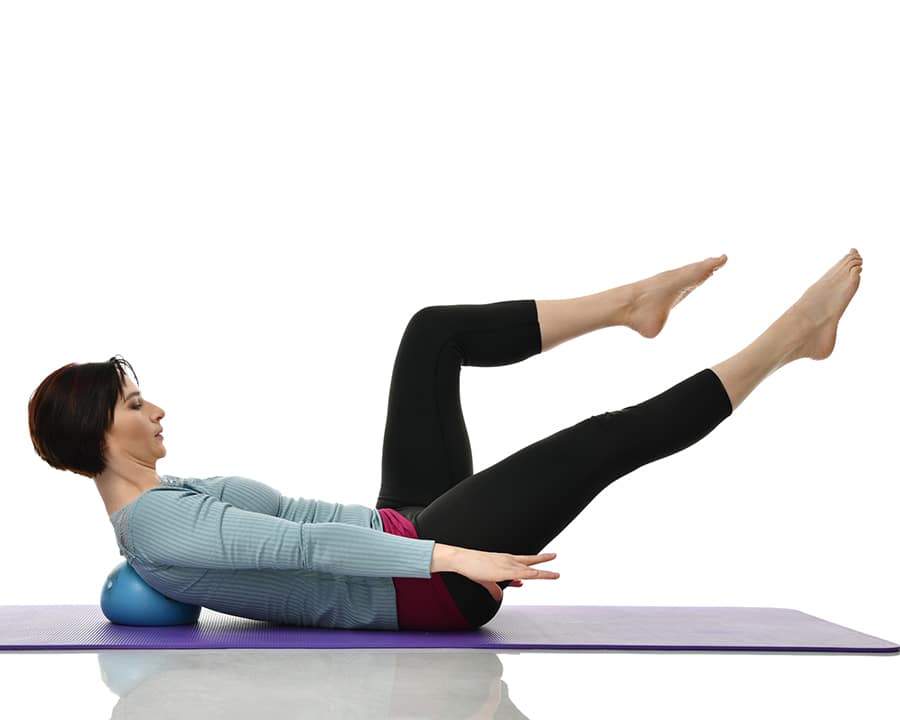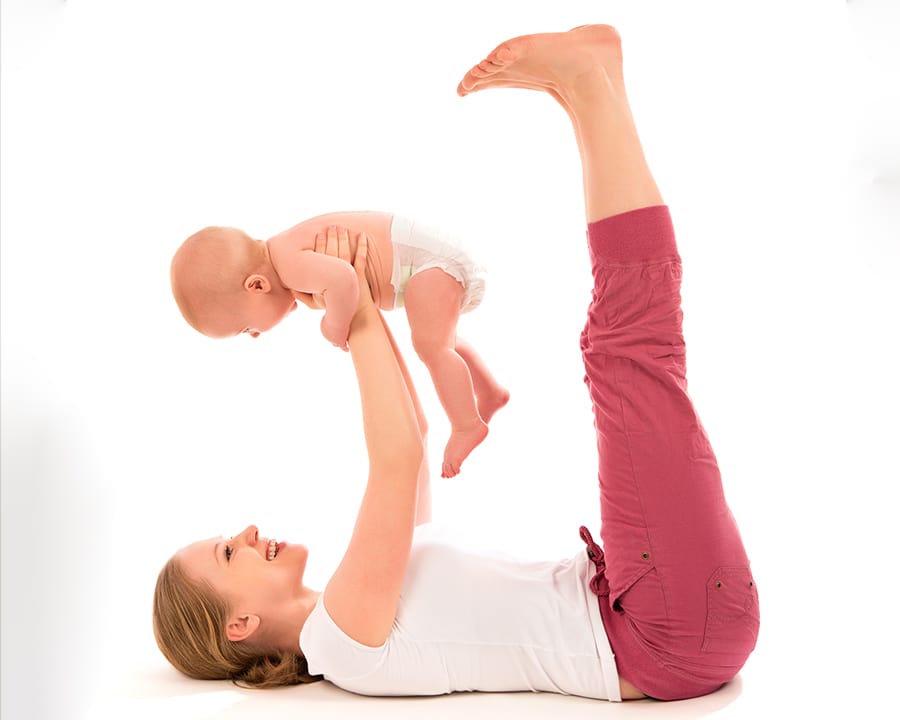
Postpartum physical therapy after giving birth can be a game-changer in helping you regain strength, flexibility, and body control. This specialized form of physical therapy helps women recover from labor and childbirth while focusing on addressing any lingering physical issues that may have arisen during the delivery process. This vital care can restore balance and confidence and relieve short-term and long-term complications by strengthening weakened muscles and improving pelvic floor health.
To maximize results from postpartum physical therapy, it’s crucial to implement the right exercises tailored to your body’s needs. That may mean focusing on core stabilization and pelvic floor exercises or incorporating strength training and cardio to boost fitness, which is where postpartum physical therapy comes in. We tailor the program to your unique needs.
More blogs from Nancy Branberg
What Causes Hip Pain In Women And How Can I Get Relief?
How To Strengthen Your Pelvic Floor
Physical Therapist Falls Church Virginia
What Is Postpartum Physical Therapy?
Taking care of a newborn is an amazing but overwhelming experience, especially when your body is still recovering from one of the most remarkable feats it can accomplish—giving birth. The postpartum period following childbirth brings about physical and emotional changes that vary for every mother. Some feel better quickly, and others struggle with ongoing aches and pains, which don’t improve with self-care techniques such as stretching, sleep, and good hydration.
For this reason, more women than ever are turning to postpartum physical therapy to help their bodies heal faster after childbirth. The postpartum physical therapy we provide helps new mothers regain strength in their core muscles, reduce pain due to overstretched or weakened tissues during delivery, restore flexibility in the pelvic floor area due to post-delivery stretching, increase mobility in hips impacted by pregnancy posture changes, improve balance related issues; all while providing education on how to prevent conditions related to excessive tissue strain caused by the pregnancy or delivery.
How Does It Help Your Body Recover After Giving Birth?
Birthing a baby is a wonderful experience. That’s undeniable. It is undoubtedly one of the most incredible experiences a woman can have. But it can also take a toll on your body. Postpartum physical therapy is a valuable tool that can help you recover more quickly and completely after a vaginal delivery or a C-section. We can work with you to target the areas that need the most attention, including your pelvic floor, abdominal muscles, and lower back.
By providing individualized exercises and techniques, we can also help prevent complications such as pelvic pain, incontinence, and diastasis recti. Postpartum physical therapy is really the gift of a smoother, healthier recovery, so you enjoy all the joys of motherhood without pain or other problems. After giving birth, many new mothers experience physical changes that can be uncomfortable and even painful, which is where postpartum physical therapy can help. But what exactly is postpartum physical therapy?
Well, one of the key components of this type of therapy is myofascial release, which involves gentle pressure on specific areas to release tension in the muscles and connective tissues. We also use stretching and strengthening exercises to build back your pre-pregnancy strength and flexibility.
Poor posture is another common issue after childbirth, so posture retraining is often included in our postpartum physical therapy sessions. Finally, we also incorporate breathing techniques into the sessions to help reduce tension and promote relaxation. But perhaps even more importantly than that, we support you in your healing journey, both physically and emotionally, after you give birth.
While it is easy to prioritize the well-being of your little one, it is essential to make sure that you also prioritize your health and recovery after childbirth. Whether you do at-home exercises, join group classes, or opt for one-on-one sessions with a physical therapist, each approach has advantages. You deserve to return to feeling comfortable in your body again post-baby.
Postpartum physical therapy can help you regain your strength, balance, and joint mobility. With consistent effort and our guidance, women often find that their body feels stronger and more resilient than ever before. So, if you’re a new mom looking to get back on your feet, postpartum physical therapy is a super-smart investment in your health and well-being.
Do You Need Help With Diastasis Recti, Pelvic Floor Dysfunction, or Back Pain?
When you’re a new mom adjusting to the changes brought on by pregnancy and childbirth, you might experience a host of physical conditions that are uncomfortable and downright inconvenient (when you’re trying to care for your new baby), such as diastasis recti, pelvic floor dysfunction – prolapse, urinary leakage, or lower back pain.
Diastasis Recti: Diastasis recti (DR) is a medical condition that affects many women post-childbirth. It can often result in an outwardly visible bump in the abdominal area and can even lead to pain and breathing difficulties. More specifically, diastasis recti is where the abdominal muscles separate, sometimes causing a visible bulge in the midsection. While it can occur in anyone, it’s particularly common in pregnant and postpartum women. It’s important to know about because it sometimes causes a variety of health issues, including back pain, poor posture, and even hernias.
Some factors can contribute to the development of this condition. The most significant factor is the pressure that the growing uterus has on the abdominal muscles during pregnancy, particularly during the third trimester. Other factors include weak core muscles, repetitive movements, and hormonal changes. But don’t worry, we can tackle this condition. The first step is an evaluation of your posture and alignment. From there, we work on specific exercises to strengthen your core and gradually bring your muscles back together.
Pelvic Floor Dysfunction: One thing that often goes unnoticed in the postpartum period is how pregnancy affects your pelvic floor – and if not taken care of in time, it can develop into something called pelvic floor dysfunction. So, no matter if you are currently still pregnant or have recently delivered your newborn baby, taking care of your pelvic floor during this precious time should be one of your top priorities – to prevent more severe problems later.
Your pelvic floor is a web of strong muscles and connective tissues that come together to form a sling-like structure at the bottom of your pelvis. It works to support your bladder, uterus, and rectum, as well as the entire weight of your upper body. During pregnancy, your pelvic floor can experience some considerable changes due to hormonal shifts and the growth of the uterus. In addition, the pressure on the pelvic floor can lead to various postpartum problems, such as urinary incontinence and pelvic pain.
Doing “Kegels” is great for general post-birth pelvic floor strengthening. Still, it’s important to recognize when you might need professional help for issues with incontinence or pelvic organ prolapse. If you have symptoms like urinary leakage, a feeling of heaviness or pain in the pelvic region, and/or experience painful sex, please get in touch to book a free evaluation.
Lower Back Pain: Postpartum back pain is something that many women experience and can range from mild aches to debilitating pain. While every woman’s experience is different, some common factors contribute to postpartum lower back pain. These can include a weakened core, changes in posture due to breastfeeding, and the physical strain of labor and delivery. By identifying the factors contributing to your pain, we can work with you to find effective solutions that allow you to better enjoy this special time with your new baby.

These are all common conditions that can affect you postpartum, but you can get the help you need to recover quickly with postpartum physical therapy. We can help you work through these issues with specialized exercises and hands-on therapy. The important thing to remember is that if you address these issues early in the postpartum period, you can prevent them from getting any worse – or worse, still requiring surgery.
Overall, postpartum physical therapy is a valuable form of healthcare that can provide dramatic benefits for new mothers. From strengthening your core to improving your balance and joint mobility, postpartum physical therapy helps you regain the strength and stability needed to feel confident about the challenge of motherhood. Whatever your unique goals and needs, we can help make sure you’re getting the most out of your postpartum rehab journey.
With the right guidance and exercises, you can speed up your recovery and return to your pre-baby self with strength and confidence.


